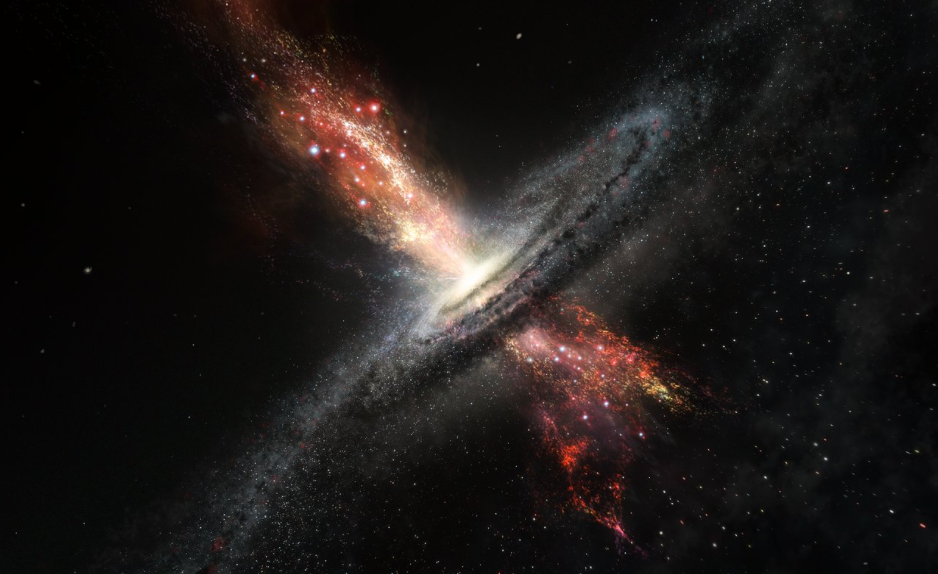
Artists’s impression of stars in winds from supermassive black holes (credit: ESO)
Astronomers used the MUSE and X-shooter instruments on the Very Large Telescope (VLT) at ESO’s Paranal Observatory in Chile to study the merging of two galaxies, named IRAS F23128-5919. The galaxies lie around 600 million light-years from Earth. During the observations, they detected outflows, i.e. winds of material that originate near the supermassive black hole (SMBH) at the heart of the merged system of galaxies. These winds are created by the SMBHs as they consume matter that is captured in their strong gravitational fields. During this process SMBHs heat the surrounding gas and expel it in the form of powerful, dense winds.
Scientists knew that inside these winds conditions could be right for star formation, but no one had actually observed such an event. Now a UK-led group of astronomers, made a direct detection of an infant stellar population in the outflow material. Their analysis showed that these stars are hotter and brighter than stars formed in less extreme environments.
This discovery gives as a new insight regarding the galaxy evolution and it may even provide us with an answer about the unexplained cosmic infrared radiation.
Publication: Maiolino et al. 2017
Sources: ESO
